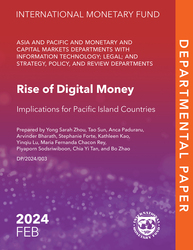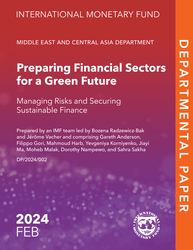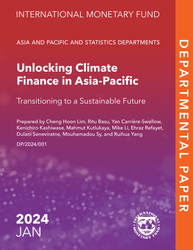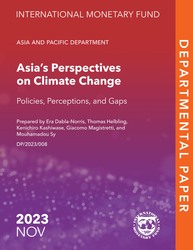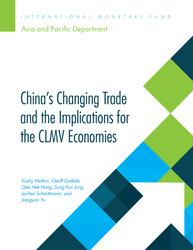
China's Changing Trade and the Implications for the CLMV
The evolution of China's trade and growth policies offers challenges and opportunities for some of its Mekong neighbors.
READ MORE...
Volume/Issue:
Volume 2016
Issue 010
Publication date: September 2016
ISBN: 9781513544991
$20.00
Add to Cart by clicking price of the language and format you'd like to purchase
Available Languages and Formats
| English |
Topics covered in this book
This title contains information about the following subjects.
Click on a subject if you would like to see other titles with the same subjects.
Exports and Imports , Economics- Macroeconomics , Industries - Manufacturing , DPPP , DP , IMF staff estimate , market share , IMF staff calculation , value chain , UN Comtrade , capital goods , export-led growth , consumer goods , Exports , Imports , Foreign direct investment , Manufacturing , Consumption , Global , Asia and Pacific , Southeast Asia , Mekong , Europe
Also of interest
Summary
China’s trade patterns are evolving. While it started in light manufacturing and the assembly of more sophisticated products as part of global supply chains, China is now moving up the value chain, “onshoring” the production of higher-value-added upstream products and moving into more sophisticated downstream products as well. At the same time, with its wages rising, it has started to exit some lower-end, more labor-intensive sectors. These changes are taking place in the broader context of China’s rebalancing—away from exports and toward domestic demand, and within the latter, away from investment and toward consumption—and as a consequence, demand for some commodity imports is slowing, while consumption imports are slowly rising. The evolution of Chinese trade, investment, and consumption patterns offers opportunities and challenges to low-wage, low-income countries, including China’s neighbors in the Mekong region. Cambodia, Lao P.D.R., Myanmar, and Vietnam (the CLMV) are all open economies that are highly integrated with China. Rebalancing in China may mean less of a role for commodity exports from the region, but at the same time, the CLMV’s low labor costs suggest that manufacturing assembly for export could take off as China becomes less competitive, and as China itself demands more consumption items. Labor costs, however, are only part of the story. The CLMV will need to strengthen their infrastructure, education, governance, and trade regimes, and also run sound macro policies in order to capitalize fully on the opportunities presented by China’s transformation. With such policy efforts, the CLMV could see their trade and integration with global supply chains grow dramatically in the coming years.
Copyright © 2010 - 2024
Powered by:
AIDC
